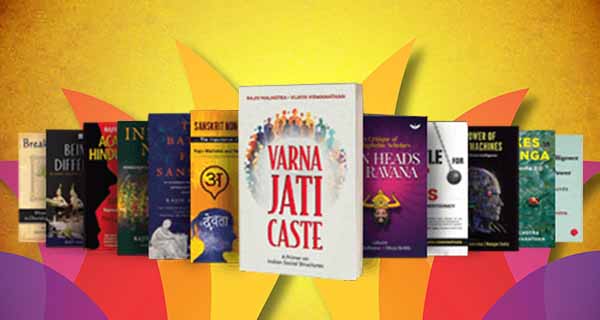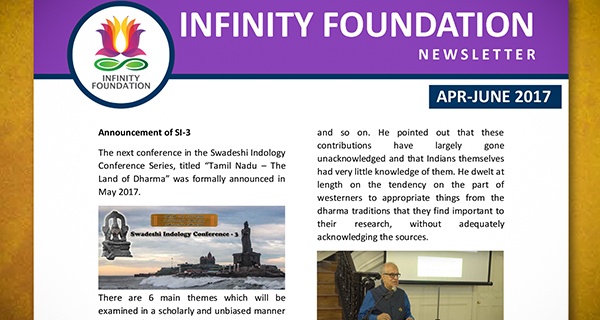Iron Technology and Its Legacy in India
Infinity Foundation sponsored new book project titled:
“Iron Technology and Its Legacy in India (From the Earliest Times to Early Medieval Period)”
by Vibha Tripathi, PhD
Iron, in India makes its earliest appearance in a chalcolithic setting, probably discovered by early copper using societies in different parts of the subcontinent. How and under what circumstances the metallurgy was learnt/discovered is an issue that is still debated. Whether iron technology was learnt through outside contacts or it evolved out of the existing knowledge of metal craft as a by product needs to be investigated into. Which part of the subcontinent it appears first? How did the metallurgy develop? Why is it that despite several attempts at different levels it has not been possible to understand much less to reproduce the wootz ? When was its impact felt in socio-economic milieu? What was the pattern of adaptation of iron technology in the early society? The interface of technology and society is yet to be examined and evaluated in all its dimensions. The present study proposes to address to such unresolved issues related to early Indian iron working. It is with this aim that the present book is proposed.
Status of Research on Iron Technology in India
Scholars in the field of history, archaeology, geology and also modern metallurgy have been taking interest in iron working practices during ancient times. Some important publications may be mentioned here. As early as 1912 Hadfield studied iron objects excavated at Taxila (Sir John Marshall). P. Niyogi wrote a history of iron (Iron in Ancient India, 1914). A sizeable work on Iron was produced by N.R. Banerjee (‘Iron Age in India’, 1965, Delhi). More recently D.K. Chakravarti published ‘Early Use of Iron in India’ (1992, Delhi). A.K. Biswas and Sulekha Biswas have written Minerals and Metals in Ancient India (INSA, Delhi 1995). G. Kuppuram and K. Kumudmani wrote History of Science and Technology in 6 volumes (New Delhi, 1990). There are chapters on iron in ‘History of Technology in India’ (Vol. 1, A.K. Bag, ed. 1997). Recent publications on iron technology are, Metallurgy in India : A Retrospective (P. Ramachandra Rao & N.G. Goswami (eds), N.M.L. Delhi 2001) D.P. Agrawal’s ‘Ancient Metal Technology and Archaeology of South Asia (Delhi, 2000) and the ‘The Age of Iron in South Asia : Legacy and Tradition’ by this author, (Vibha Tripathi, Delhi, 2001). Work is also underway on various aspects of iron metallurgy, viz. R. Balasubramaniam is engaged in study and analysis of Delhi iron pillar and is writing frequently on it. Thelma Lowe has been working on the Wootz steel for more than a decade. Articles on these subjects appear in Indian and International journals from time to time. Tylecote, Pleiner, Maddin etc. have been contributing on archaeometallurgy writing on different aspects of iron metallurgy in reputed journals.
Justification
There is now a need to undertake an overview of all the researches going on in different parts of the world and present a comprehensive history of iron in India. Equally important, though much more ardous is the study of artifacts from excavations that are being conducted in different parts of India. A systematic classification and analysis of these objects belonging to different phases of cultural growth will throw a much needed light on development and adaptation pattern of technology and the impact on its contemporary society.
Interestingly, despite the adverse conditions, against all odds the traditional societies living in remote parts of India still continue to produce iron in the age old primitive methods. It may be interesting to investigate it closely and make a proper documentation of these practices. Besides being a model for understating the past, these societies are bearers of a legacy of the glorious tradition of Indian iron technology. A field survey conducted in these areas is likely to yield fruitful results and shed light on the Indian heritage in this field.
Ancient Indian literature is a rich source of knowledge on different aspects of life, including on metal technology. To give an example, the early medieval text Ras Ratna Samuchchaya, describes several varieties of iron and their manufacturing processes. It may be worth its while to incorporate material from the literary sources to substantiate the information available from other sources, an exercise that has not been done on an appreciable scale, so far. This is high time that such an examination of sources is attempted with a multidisciplinary angle covering all these aspects of ancient Indian iron working. It is proposed to undertake this work in this book.
Aims and Objectives
(ii) To conduct a brief field survey including small scale excavations in some selected areas for untapped sources of information.
(iii) To collect samples for study and analyse them for a proper and phasewise understanding of different aspects of metallurgical development.
(iv) To correlate the resource-zones and the related important cultural centres of ancient India.
(v) To undertake ethnographic investigations in remote areas for the surviving remains of traditional iron working.
(vi) To interpret and synthesise the data collected in the form of a book on ancient Indian iron technology covering all its aspects.
To fulfill these objectives I propose to adopt the following approach:
Approach
(ii) Exploration of minerally rich areas for remains of ancient working and collection of sample.
(iii) Collection and analysis of ore, iron objects crucibles, slags, furnace remains for retrieving further information and reconstruction of metallurgical processes.
(iv) Survey and documentation of tribal regions for collection of indepth information on traditional iron working. Some small scale excavations, if necessary may have to be undertaken.
(v) Synthesis of the above data in the form of a book.
The format of the proposed book (which may be modified if need be) may be spelled out as under:
Ch.I. Introduction
I.1. Incidence of iron in ancient world : If we situate the examination of iron in India in the world context we may get a better perspective. The issues like circumstances of the earliest recognition and emergence of metallic iron may have certain comparable features in different world civilizations. Therefore, we need to examine –
b. Egypt
c. Central Asia
d. Iran
e. China
I.2. The early iron technology, typology, iron utilization pattern and whether it had any impact other than status symbol needs to be assessed.
I.3. Why and when iron comes to be adopted in preference to copper-bronze.
I.4. Coming of an age of iron in ancient world.
Ch.II. Advent of Iron in India
a. Is iron in India an accidental by product of earlier metal working or alternatively a consequence of interactions?
b. Where is the evidence of experimental stages?
c. Are there cases of meteoritic iron in India?
II.1. First iron in India in Copper-Bronze Age Setting
b. Iron at Chalcolithic Ahar
c. Iron at Chalcolithic Madhya Pradesh
II.2. First Regular Use of Iron
(In a large country like India there are different zones that show iron in divergent cultural contexts).
2.2 Chronological Framework and antiquity of iron.
2.3 Conclusion and Discussion.
Ch. III. Archaeological Evidence of Iron
III.1. The Early Iron Age (Second half of 2nd mill. BC – 7/600 BC) : The main culture of this stage are:
III.1.1 The Painted Grey Ware Culture
1.2 The Black-and-Red Ware bearing Cultures (of Mid and Lower Ganga Plain)
1.3 The Megalithic Culture (of South India)
The chronological framework and the utilization pattern with an impact on culture will be evaluated at the above stages.
III.2 The Middle Iron Age (7/600-100 BC)
The emergence of cities vis-à-vis iron.
III.3 The Late Iron Age (100 BC/AD-5/600 AD)
III.4 Conclusion and Discussion
Chapter-IV
IV. Growth of Metallurgy
IV.1 The Bloomery iron – smelting and forging
IV.2 From wrought iron to steel
2b. Quenching and tempering ;lamination
IV.3 Crucible iron or wootz steel
A high quality steel with famous watering pattern was produced from around the early centuries of the Christian era in certain parts of India.The swords produced with this steel have been famous all over the world as Damascus steel perhaps because this was the centre from where they were being exported to different parts of the world.They had excellent qualities like malleability ductility and durability of edge.Mostly preserved in collections in Middle East, experts in metallurgical sciences have tried to understand the processes without much success.We need to focus on this masterly craft of the Indian artisans. Following issues related to the wootz or so called Damascus steel need to be taken up for a detailed examination:
3.2 Furnaces, forges and crucibles
3.3 Transportation and distribution mechanism
3.4 Conclusion and Discussion
V. Literary Evidence on Iron
India has a rich literary tradition stretching over several millennia. Though primarily socio-religious in nature, it does contain information on the present subject albeit sparsely. On closer look it is possible to glean through for information on (a) techno-typological know-how (b) utilization pattern (c) value perception of metals (d) class biases, if any. The literary sources may be classified as under:
V.1 Brahmanical texts
a. Vedic literature
b. Dharmashastra and Sutra literature (including Panini)
c. The Epics
d. The Arthasatra
e. Nitisastras and texts on polity.
V.2 The Buddhist and Jain Texts
a. The main texts
b. The Commentries
V.3 The Stratigraphy and chronology of the selected texts
Note : It may not be possible to take up all the available texts for obvious reasons. But the archaeological evidence wherever possible may be substantiated with information from literary sources.
V.4 Conclusion and Discussion
VI. The Ethnological Evidence: The Model of understanding technology
VI.1 Pre-industrial Iron working in India (India had a rich tradition of iron working before the British period. The nature of the working and the mechanics of production and distribution will be examined in this section).
VI.2 End of a Tradition : The teeming cottage industry of iron working comes almost to a grinding halt during the British period. What were the causes of the same? Did it die for good? Such questions need to be addressed to while dealing with the status of ethnological evidence on iron.
VI.3 Survival : Iron working survived in some remote parts of the country against all odds. It has been preserved by some ethnic groups. We propose to underline their working.
3.1 Ore selection and mining
3.2 Beneficiation
3.3 Smelting-forging and smithy
3.4 Tools, implements and settings
3.5 Furnaces, forges, tuyeres, slags etc.
VI.4. Revival of Indigenous iron technology : Problems and Prospects
It may be worth examining whether there is a possibility of reviving this craft today. Is prospects will be examined for:
4.1 Economic viability (?)
4.2 Future prospects of revival
4.3 Conclusion and Discussion
Ch.VII. Conclusion
VII.1 Socio-economic Implication of Use of Iron through The Ages
2. Technology adaptation and productivity
3. Iron and urbanization of Ganga Plains
4. Conclusion – Cultural dynamics.
To view a copy of the author’s cv, please click here.



